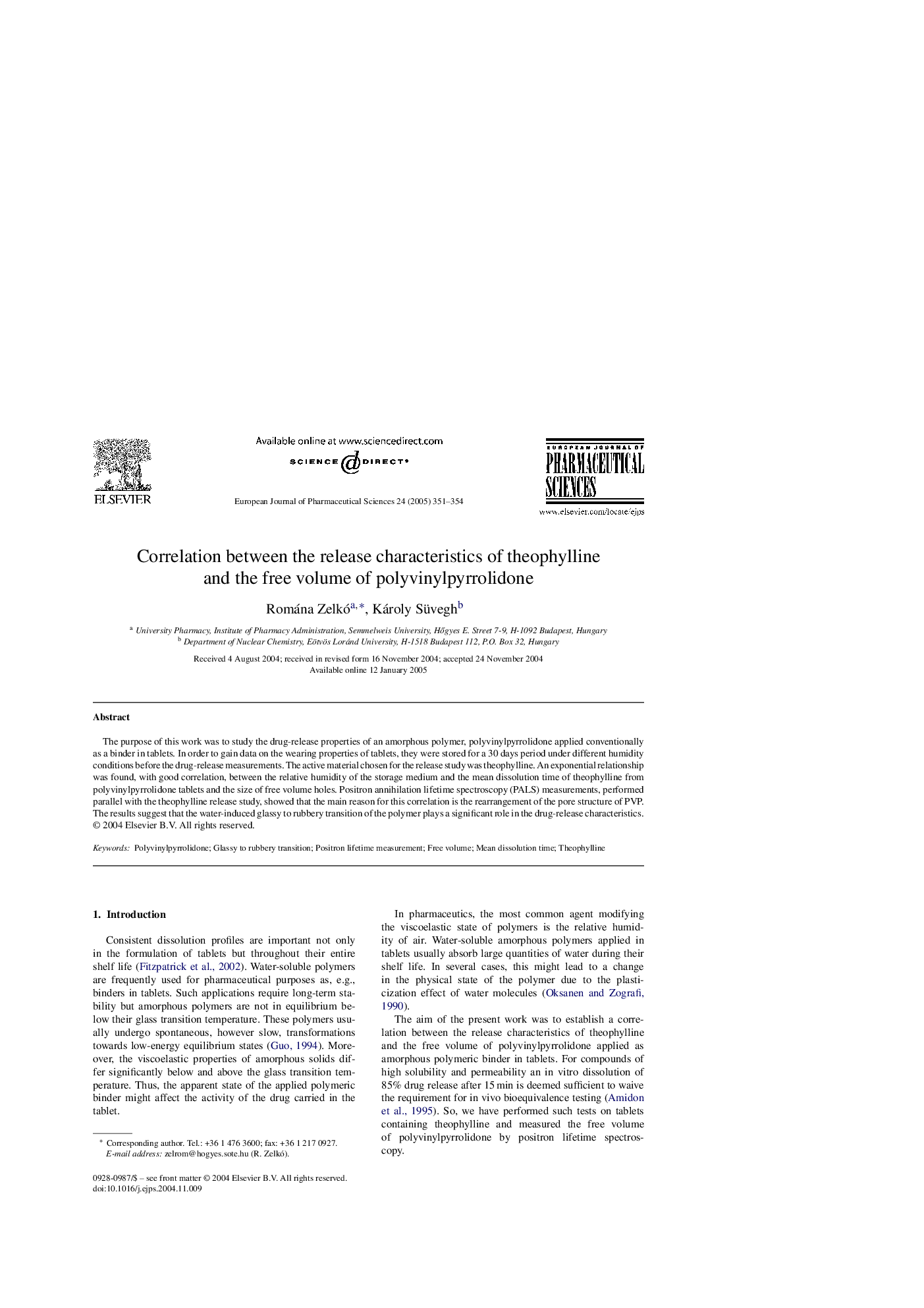| Article ID | Journal | Published Year | Pages | File Type |
|---|---|---|---|---|
| 9917749 | European Journal of Pharmaceutical Sciences | 2005 | 4 Pages |
Abstract
The purpose of this work was to study the drug-release properties of an amorphous polymer, polyvinylpyrrolidone applied conventionally as a binder in tablets. In order to gain data on the wearing properties of tablets, they were stored for a 30 days period under different humidity conditions before the drug-release measurements. The active material chosen for the release study was theophylline. An exponential relationship was found, with good correlation, between the relative humidity of the storage medium and the mean dissolution time of theophylline from polyvinylpyrrolidone tablets and the size of free volume holes. Positron annihilation lifetime spectroscopy (PALS) measurements, performed parallel with the theophylline release study, showed that the main reason for this correlation is the rearrangement of the pore structure of PVP. The results suggest that the water-induced glassy to rubbery transition of the polymer plays a significant role in the drug-release characteristics.
Related Topics
Health Sciences
Pharmacology, Toxicology and Pharmaceutical Science
Drug Discovery
Authors
Romána Zelkó, Károly Süvegh,
